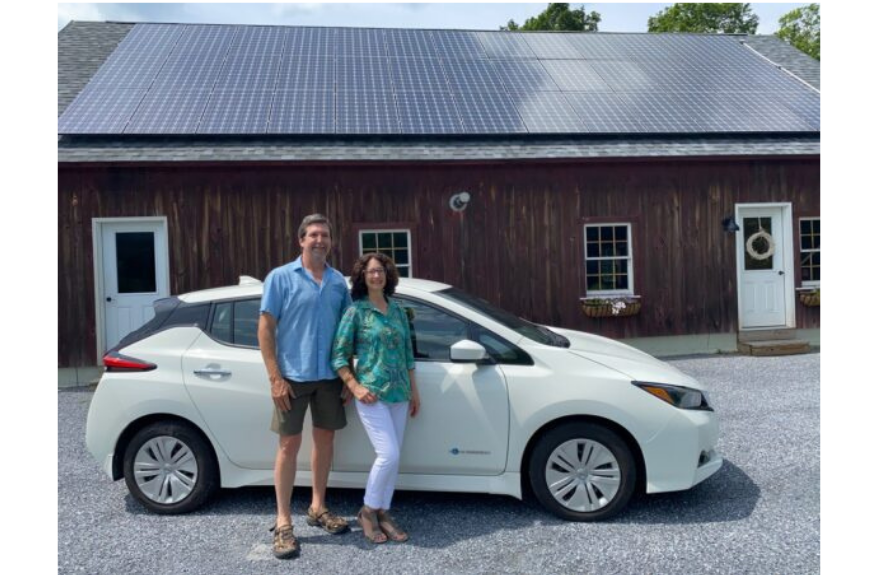Every family has their own style and ours has always been—if you see a problem, don’t complain about it, do something. We saw early on that climate disruption was on its way and we wanted to figure out a way that one family could affect change through lifestyle choices. We set our goal to reduce and maybe even eliminate all fossil fuels from our home. To tell you the truth, we thought it would be simpler and quicker than it turned out to be. This challenge set us off on a multi-year journey.
A Big Question: How Could We Afford Solar Panels?
A good start was solar for our barn roof, but at the time, we had two teenage daughters ready to head off to college and I told my husband that the budget was tight and I didn’t see any room in it for this type of house project. He figured out the math and discovered that you could pay the electric company for 10 years with no return or take out a 10-year loan to pay for the solar. And then this solar asset creates power feeding back to the grid, thereby eliminating our electric bill. After 10 years we would own the solar outright and have an asset that can produce power for another 30 years. I couldn’t argue with that logic, so the panels went up.
 What About Vehicles?
What About Vehicles?
Next up, let’s be the first kids on the block with an electric car. It was early days with this technology and not a lot of options, so we decided to lease one of the first generations of Nissan Leaf. This all-electric car could achieve amazing speed in no time, so much faster than the gas cars, because it didn’t have to change gears. Full on power from the minute you hit the accelerator. And the only trip to the car mechanics was to change tires seasonally because there is no radiator, no exhaust pipes, no transmission, nothing to combust, very little in the way of mechanics to service. Flying by the gas station without ever having to pull in to gas up was a bit of a secret thrill.
Range Anxiety is Real
The 90-mile range was perfect for local jaunts around town, not so great for long trips with no charging infrastructure anywhere. The promise of a charging station in Rutland led us into a cow field with no charger anywhere in sight. We did make it back home, but just barely and not without the dreaded ‘range anxiety’ which every electric car owner has experienced at least once. We discovered that the car would go further if you turned off the heat and kept warm with only the heated steering wheel and car seat heaters on. Oh, and it picked up miles going downhill so we worked out all kinds of routes to keep the charge going. We have recently upgraded to the latest model of Nissan Leaf with a range of 250 miles and a wider charging station infrastructure so that range anxiety isn’t so much an issue in our lives as it used to be.
 How to Heat the House?
How to Heat the House?
Our propane heater in the basement of our old house cooperated with our plans to jettison fossil fuels by completely breaking one winter. We had already added a pellet stove that we used almost exclusively to heat the house, but we still needed a back-up heat source for weekends away when we were not around to tend it. The internet led us to an Argo Electric hot water boiler, mostly used in Europe. We were able to find one in the States and convince our electrician and plumber to install it. Heat pumps followed a few years later in the house and barn. Here in Vermont, we are used to having multiple heat sources, especially in old houses but I have to say that heat pumps that heat in winter and cool in summer, using very little electricity are a most elegant solution. Highly recommend.
The Electrifying Summary
All that’s left is one tiny propane heater in the barn that stays unplugged and hasn’t been used for 2 years, and one last combustible engine car, which is about to go. It took longer than we thought but we enjoyed the journey along the way and learned a lot. We added a bit more solar to offset the electric usage of the heat pumps and now all the systems are run off our solar array.
The world of renewables and sustainability is so promising that we started our own solar company, Grassroots Solar. The name was thoughtfully chosen because we want to share with our community that ordinary people can live an electrifying lifestyle. Let’s not sit on the sidelines and wait for the world to change. We can help each other be that change, one household at a time.
